
Bluetooth is a short-range wireless technology standard that is used for exchanging data between fixed and mobile devices over short distances and building personal area networks (PANs). In the most widely used mode, transmission power is limited to 2.5 milliwatts, giving it a very short range of up to 10 metres (33 ft). It employs UHF radio waves in the ISM bands, from 2.402 GHz to 2.48 GHz. It is mainly used as an alternative to wired connections to exchange files between nearby portable devices and connect cell phones and music players with wireless headphones.
Proximity marketing is the localized wireless distribution of advertising content associated with a particular place. Transmissions can be received by individuals in that location who wish to receive them and have the necessary equipment to do so.
Bluetooth advertising is a method of mobile marketing that utilizes Bluetooth technology to deliver content such as message, information, or advertisement to mobile devices such as cellular phones or tablet computers. Bluetooth advertising can also be received via laptop or personal digital assistants (PDAs).
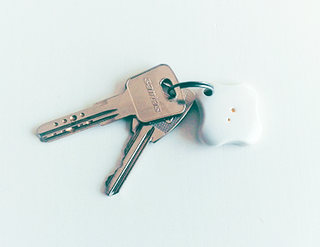
Key finders, also known as keyfinders, key locators, or electronic finders, are small electronic devices fitted to objects to locate them when misplaced or stolen, such as keys, luggage, purses, wallets, pets, laptop computers, toddlers, cellphones, equipment, or tools, and to transmit alerts, e.g., that one's restaurant table is ready or a nurse is needed. Some key finders beep or flash lights on demand.
Bluetooth Low Energy is a wireless personal area network technology designed and marketed by the Bluetooth Special Interest Group aimed at novel applications in the healthcare, fitness, beacons, security, and home entertainment industries. Compared to Classic Bluetooth, Bluetooth Low Energy is intended to provide considerably reduced power consumption and cost while maintaining a similar communication range.
This is a comparison of mobile operating systems. Only the latest versions are shown in the table below, even though older versions may still be marketed.

Apple Wallet is a digital wallet developed by Apple Inc. and included with iOS and watchOS that allows users to store Wallet passes such as coupons, boarding passes, student ID cards, government ID cards, business credentials, resort passes, car keys, home keys, event tickets, public transportation passes, store cards, and – starting with iOS 8.1 – credit cards, and debit cards for use via Apple Pay.
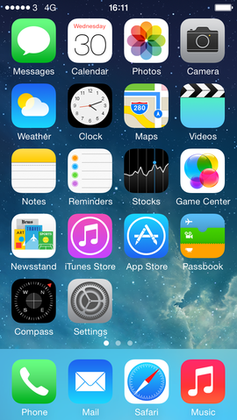
iOS 7 is the seventh major release of the iOS mobile operating system developed by Apple Inc., being the successor to iOS 6. It was announced at the company's Worldwide Developers Conference on June 10, 2013, and was released on September 18 of that year. It was succeeded by iOS 8 on September 17, 2014.
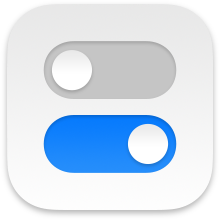
Control Center is a feature of Apple Inc.'s iOS, iPadOS, macOS, and visionOS operating systems. It was introduced as part of iOS 7, released on September 18, 2013. In iOS 7, it replaces the control pages found in previous versions. It gives iOS and iPadOS devices direct access to important settings for the device by swiping down from the top right corner on the iPhone X and newer, and on all iPad models starting with iOS 12 or iPadOS, with previous models using a swipe from the bottom of the screen. It is similar to the SBSettings tweak for iOS jailbreaking. Control Center was also added to Macs in macOS 11 Big Sur, released on November 12, 2020.

Tile is an American consumer electronics company which produces tracking devices that users can attach to their belongings such as keys and backpacks. A companion mobile app for Android and iOS allows users to track the devices using Bluetooth 4.0 in order to locate lost items or to view their last detected location. The first devices were delivered in 2013. In September 2015, Tile launched a newer line of hardware that includes functionality to assist users in locating smartphones, as well as other feature upgrades. In August 2017, two new versions of the Tile were launched, the Tile Sport and Tile Style. As of 2019, Tile's hardware offerings consist of the Pro, Mate, Slim, and Sticker.
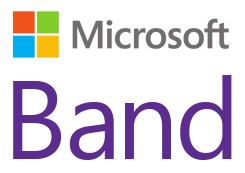
Microsoft Band is a discontinued smart band with smartwatch and activity tracker/fitness tracker features, created and developed by Microsoft. It was announced on October 29, 2014. The Microsoft Band incorporates fitness tracking and health-oriented capabilities and integrated with Windows Phone, iOS, and Android smartphones through a Bluetooth connection. On October 3, 2016, Microsoft stopped sales and development of the line of devices. On May 31, 2019, the Band's companion app was decommissioned, and Microsoft offered a refund for customers who were lifelong active platform users.
Eddystone was a Bluetooth Low Energy beacon profile released by Google in July 2015. In December 2018 Google stopped delivering both Eddystone and Physical Web beacon notifications. The Apache 2.0-licensed, cross-platform, and versioned profile contained several frame types, including Eddystone-UID, Eddystone-URL, and Eddystone-TLM. Eddystone-URL was used by the Physical Web project, whereas Eddystone-UID was typically used by native apps on a user's device, including Google's first party apps such as Google Maps.
Bluetooth beacons are hardware transmitters — a class of Bluetooth Low Energy (LE) devices that broadcast their identifier to nearby portable electronic devices. The technology enables smartphones, tablets and other devices to perform actions when in close proximity to a beacon.
Beacons are small devices that enable relatively accurate location within a narrow range. Beacons periodically transmit small amounts of data within a range of approximately 70 meters, and are often used for indoor location technology. Compared to devices based on Global Positioning System (GPS), beacons provide more accurate location information and can be used for indoor location. Various types of beacons exist, which can be classified based on their type of Beacon protocol, power source and location technology.

Find My Device is an asset tracking service provided by Google to remotely trace, locate and wipe devices that are compatible with the Find My Device network. It was initially launched on the 2nd of August 2013.
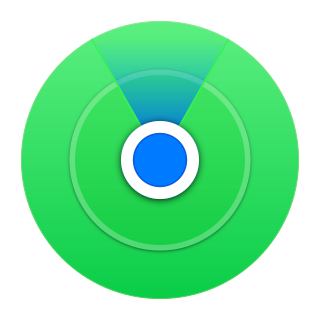
Find My is an asset tracking service made by Apple Inc. that enables users to track the location of iOS, iPadOS, macOS, watchOS devices, AirPods, AirTags, and a number of supported third-party accessories through a connected iCloud account. Users can also show their GPS locations to others with Apple devices and can view the location of others who choose to share their location. Find My was released alongside iOS 13 on September 19, 2019, merging the functions of the former Find My iPhone and Find My Friends into a single app. On watchOS, Find My is separated into three different applications: Find Devices, Find People and Find Items.

AirTag is a tracking device developed by Apple. AirTag is designed to act as a key finder, which helps people find personal objects. To locate lost items, AirTags use Apple's crowdsourced Find My network, estimated in early 2021 to consist of approximately one billion devices worldwide that detect and anonymously report emitted Bluetooth signals. AirTags are compatible with any iPhone, iPad, or iPod Touch device capable of running iOS/iPadOS 14.5 or later, including iPhone 6S or later. Using the built-in U1 chip on iPhone 11 or later, users can more precisely locate items using ultra-wideband (UWB) technology. AirTag was announced on April 20, 2021, made available for pre-order on April 23, and released on April 30.

The (Google/Apple) Exposure Notification System (GAEN) is a framework and protocol specification developed by Apple Inc. and Google to facilitate digital contact tracing during the COVID-19 pandemic. When used by health authorities, it augments more traditional contact tracing techniques by automatically logging close approaches among notification system users using Android or iOS smartphones. Exposure Notification is a decentralized reporting protocol built on a combination of Bluetooth Low Energy technology and privacy-preserving cryptography. It is an opt-in feature within COVID-19 apps developed and published by authorized health authorities. Unveiled on April 10, 2020, it was made available on iOS on May 20, 2020 as part of the iOS 13.5 update and on December 14, 2020 as part of the iOS 12.5 update for older iPhones. On Android, it was added to devices via a Google Play Services update, supporting all versions since Android Marshmallow.

The Olio Model One is a discontinued smartwatch sold from 2015 to 2016 by the now defunct Olio Devices, Inc.

The Temporary Contact Numbers Protocol, or TCN Protocol, is an open source, decentralized, anonymous exposure alert protocol developed by Covid Watch in response to the COVID-19 pandemic. The Covid Watch team, started as an independent research collaboration between Stanford University and the University of Waterloo was the first in the world to publish a white paper, develop, and open source fully anonymous Bluetooth exposure alert technology in collaboration with CoEpi after writing a blog post on the topic in early March.















